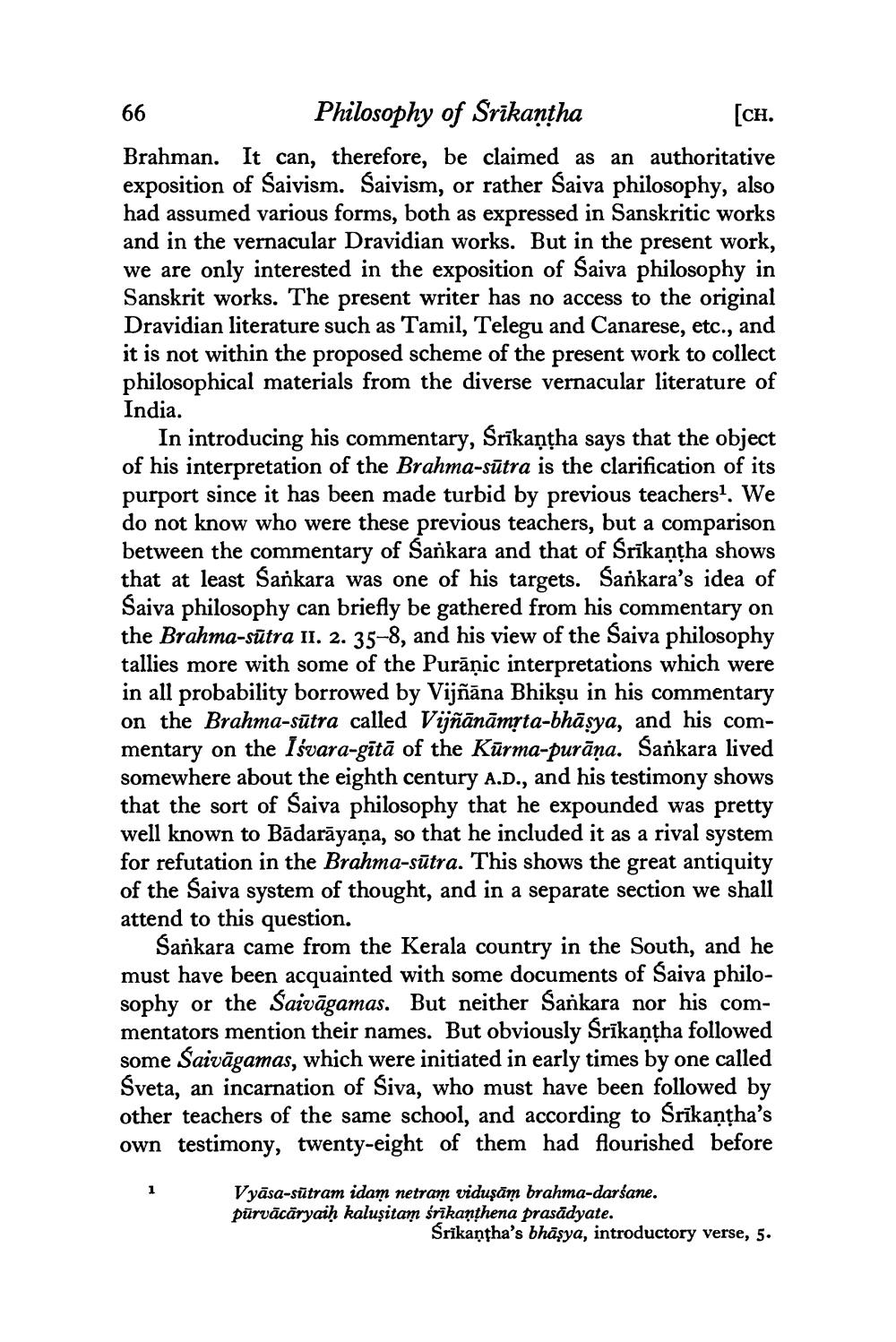________________
66 Philosophy of Srikantha
[CH. Brahman. It can, therefore, be claimed as an authoritative exposition of Saivism. Saivism, or rather Saiva philosophy, also had assumed various forms, both as expressed in Sanskritic works and in the vernacular Dravidian works. But in the present work, we are only interested in the exposition of Saiva philosophy in Sanskrit works. The present writer has no access to the original Dravidian literature such as Tamil, Telegu and Canarese, etc., and it is not within the proposed scheme of the present work to collect philosophical materials from the diverse vernacular literature of India.
In introducing his commentary, Srīkaņķha says that the object of his interpretation of the Brahma-sūtra is the clarification of its purport since it has been made turbid by previous teachers. We do not know who were these previous teachers, but a comparison between the commentary of Sankara and that of Srīkantha shows that at least Sankara was one of his targets. Sankara's idea of Saiva philosophy can briefly be gathered from his commentary on the Brahma-sūtra II. 2. 35-8, and his view of the Saiva philosophy tallies more with some of the Purāņic interpretations which were in all probability borrowed by Vijñāna Bhikṣu in his commentary on the Brahma-sūtra called Vijñānāmta-bhāsya, and his commentary on the Isvara-gītā of the Kūrma-purāņa. Sankara lived somewhere about the eighth century A.D., and his testimony shows that the sort of Saiva philosophy that he expounded was pretty well known to Bādarāyaṇa, so that he included it as a rival system for refutation in the Brahma-sūtra. This shows the great antiquity of the Saiva system of thought, and in a separate section we shall attend to this question.
Sankara came from the Kerala country in the South, and he must have been acquainted with some documents of Saiva philosophy or the Šaivāgamas. But neither Sankara nor his commentators mention their names. But obviously Srīkaņķha followed some Saivāgamas, which were initiated in early times by one called Sveta, an incarnation of Siva, who must have been followed by other teachers of the same school, and according to Srikantha's own testimony, twenty-eight of them had flourished before
Vyāsa-sūtram idam netram viduşām brahma-darśane. pürvācāryaih kaluşitam śrīkanthena prasādyate.
Srikantha's bhāşya, introductory verse, 5.




